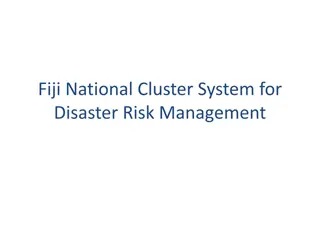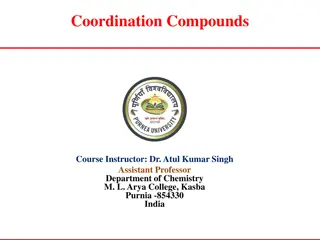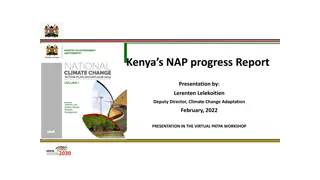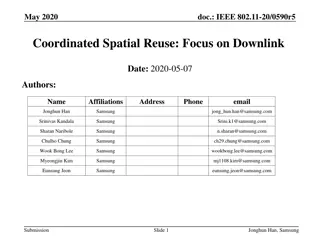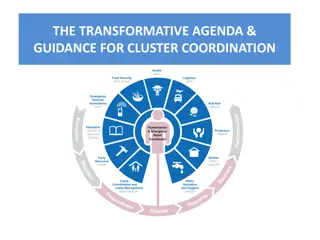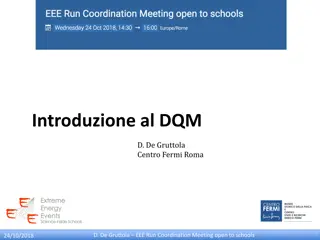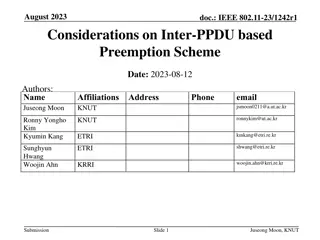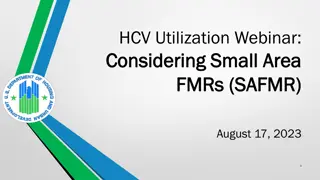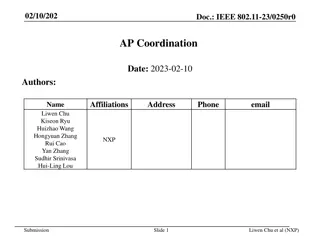Sub-National Coordination: Benefits and Implementation
Sub-national coordination allows for decentralized decision-making, close cooperation with stakeholders, and increased community involvement. This approach ensures quick response times, adaptation to local circumstances, and enhanced accountability to affected populations. Learn about the roles, advantages, stakeholders, and steps to establish sub-national coordination.
Download Presentation

Please find below an Image/Link to download the presentation.
The content on the website is provided AS IS for your information and personal use only. It may not be sold, licensed, or shared on other websites without obtaining consent from the author. Download presentation by click this link. If you encounter any issues during the download, it is possible that the publisher has removed the file from their server.
E N D
Presentation Transcript
SUB-NATIONAL COORDINATION
WHY SETTING UP A SUB NATIONAL COORDINATION? Decentralized coordination and operational decisions, the closest possible to the beneficiaries and affected areas Established on the basis of operational needs Should be deactivated as soon as those needs are met or when local coordination capacity is adequate
WHAT IS THE ROLE OF A SUB NATIONAL COORDINATION? Sub-national structures should fulfill the same core functions as national clusters, while being streamlined and tailored to the local operational realities. The working methods of sub-national clusters must be light and focused on: service delivery operational activities promoting the involvement of the affected populations in cluster activities
WHO IS INVOLVED IN SUB NATIONAL COORDINATION? Local Government CLA (field officers) All partners in the concerned area Opportunity to share cluster leadership Coordination leadership arrangements do not need to mirror those at the national level (some clusters can be merged at sub national level while they remain separate at national level).
ADVANTAGES OF A SUB NATIONAL COORDINATION facilitate decentralized decision-making Enhance the response time between decision- taking and implementation Better suited to adapting existing standards to local circumstances Better placed to maintain close cooperation with international, national and local NGOs and authorities in implementing the strategic plan Paying direct attention to cross-cutting and multidimensional issues Ensuring greater community involvement and participation Enhancing accountability to affected populations
HOW TO ESTABLISH A SUB NATIONAL COORDINATION? Consultative decision between HCT and CLA Rep. and Cluster coordinator from national level Identification of sub national cluster coordinator (sub national cluster coordinator TORs should also be formalized) Sub-national cluster TORs should: Follow the core functions of a cluster at country level and be formalized Have clear and articulated lines of accountability between national and sub-national levels Agree on a clear and understood sequencing: national meetings should take place after sub-national meetings and both discussions should be based on a reliable record of decisions taken and issues raised Establish a clear reporting and information sharing mechanism
THE LINK BETWEEN NATIONAL AND SUB NATIONAL COORDINATION The national level clusters should provide support and strategic direction to sub-national clusters, with sub-national clusters informing the formulation of that strategy. National clusters should provide support and policy direction to sub-national clusters while links between sub-national and national clusters should: Facilitate reporting, information-sharing and collaboration with national and sub-national clusters; Promote coherence of national programming and overall coordination; Help track trends; Identify shared and common concerns in operational areas; Develop more upstream advocacy and programming strategies.







